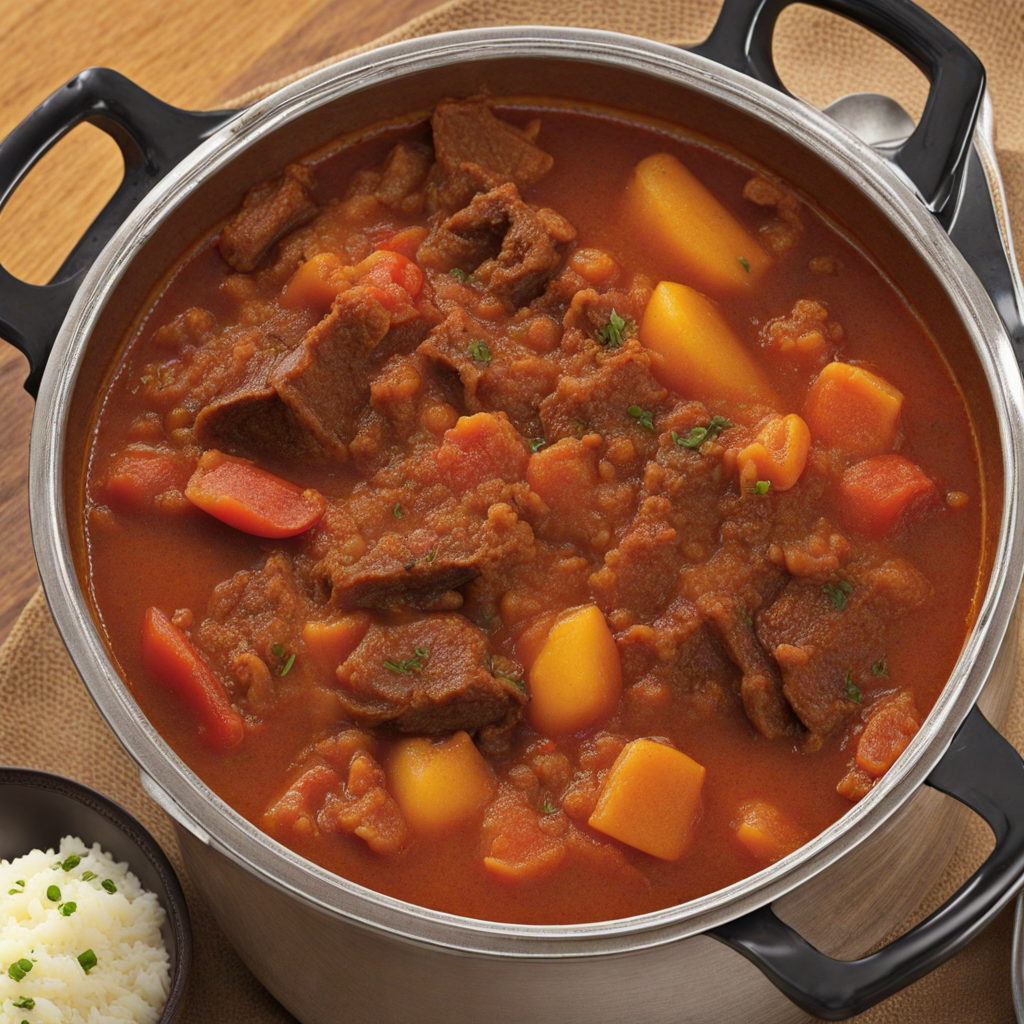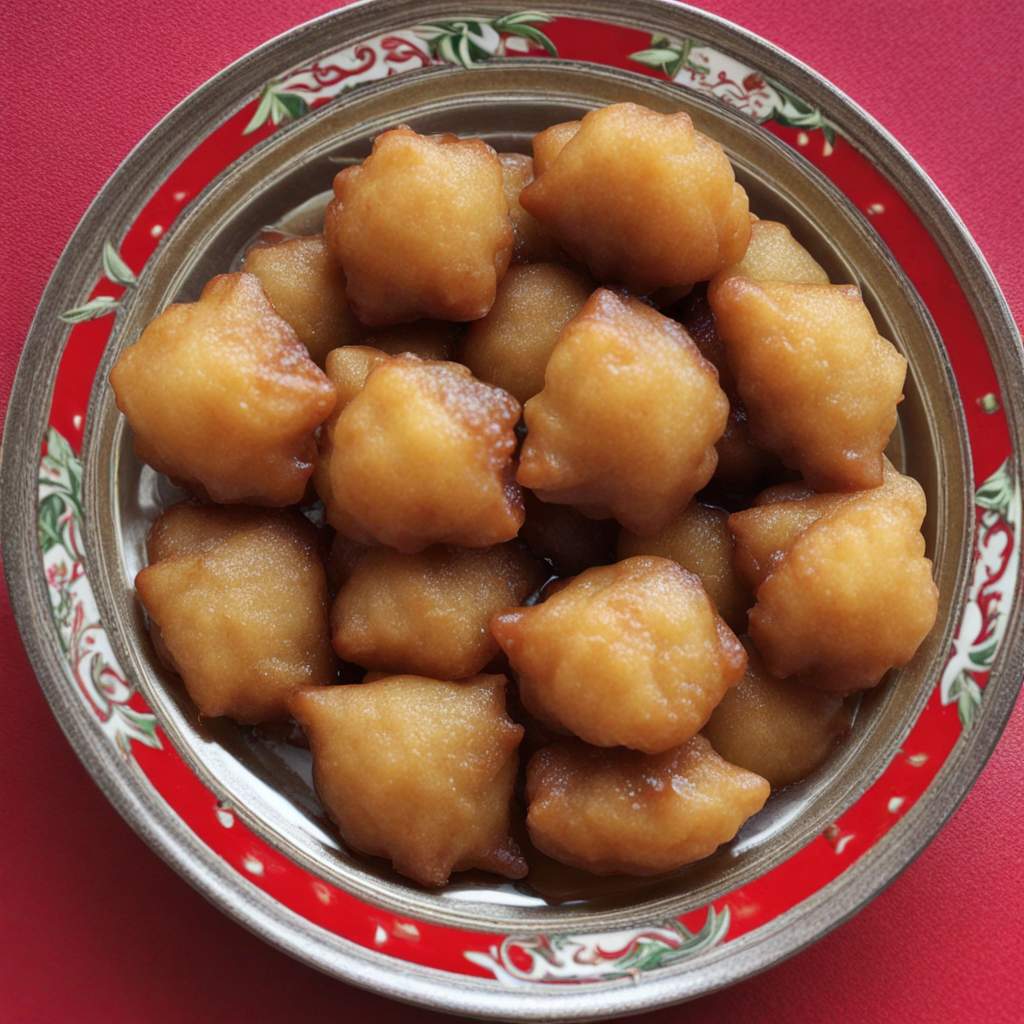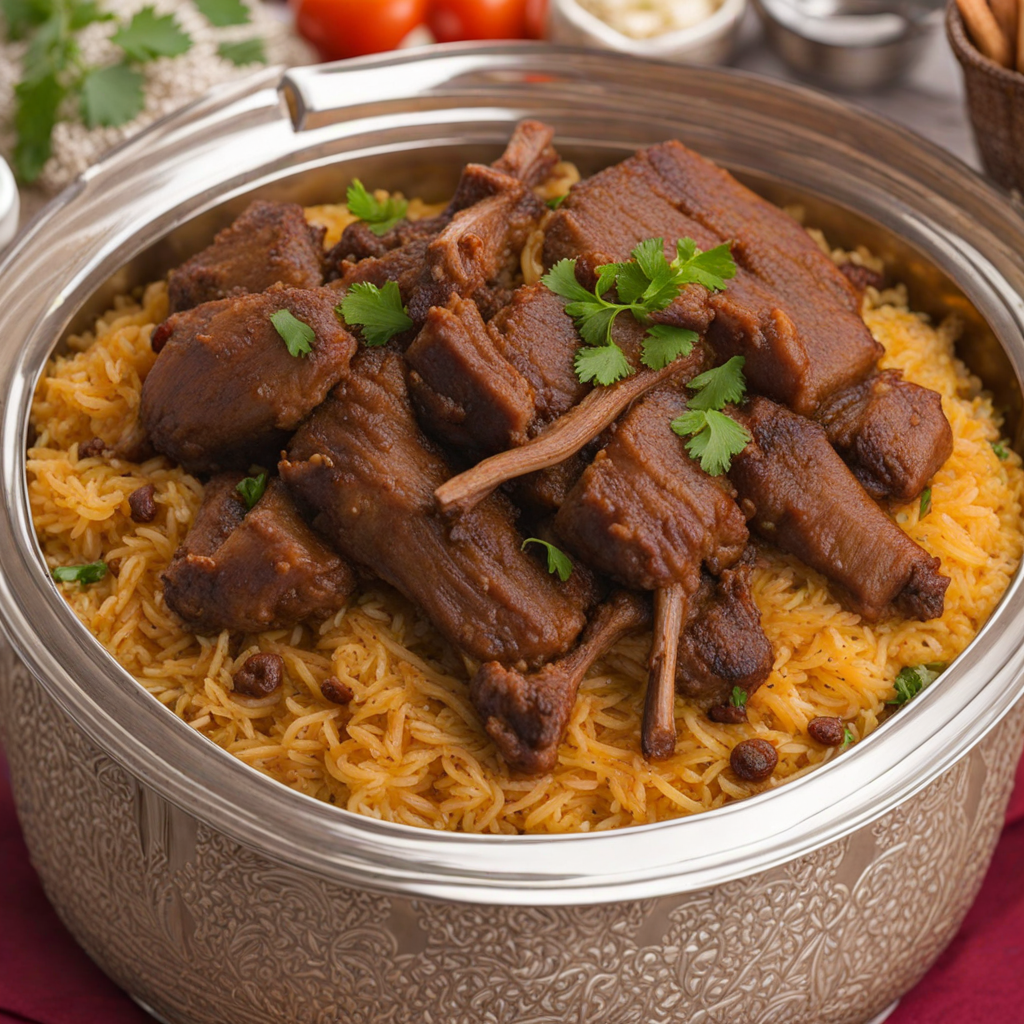Margoog
Margoog is a traditional Qatari dish that embodies the rich flavors and culinary heritage of the region. This comforting stew is primarily made with tender pieces of meat, usually lamb or chicken, which are simmered to perfection with a blend of aromatic spices. The dish often includes a variety of vegetables such as carrots, potatoes, and sometimes eggplant, all contributing to a hearty and flavorful experience. What sets Margoog apart is its unique use of thinly rolled dough, which is torn into pieces and added to the stew, soaking up the savory broth and adding a delightful texture to each bite. The preparation of Margoog is a labor of love, often shared among family and friends, making it a dish that is steeped in tradition. The spices used in Margoog, such as cumin, coriander, and turmeric, create a warm and inviting aroma that fills the kitchen, drawing everyone to the table. The slow cooking process allows the flavors to meld beautifully, resulting in a dish that is both aromatic and satisfying. Each spoonful reveals a medley of tastes, from the tender meat to the wholesome vegetables, all enveloped in a rich and flavorful gravy. Served hot, Margoog is typically accompanied by a side of rice or flatbread, allowing you to enjoy the stew in various ways. Whether you choose to scoop it up with bread or ladle it over rice, each mouthful offers a new discovery of flavors and textures. This dish not only nourishes the body but also tells the story of Qatari culture and hospitality, making Margoog a must-try for anyone looking to explore the culinary delights of Qatar.
How It Became This Dish
The History of مرقوق (Marqooq) in Qatar Introduction مرقوق (Marqooq) is a traditional Qatari dish renowned for its comforting flavors and rich cultural significance. This hearty meal is characterized by its use of thin, unleavened bread, usually made from whole wheat flour, layered with a flavorful stew composed of meat, vegetables, and spices. Marqooq not only serves as a staple in Qatari cuisine but also embodies the social and cultural fabric of the region. Its origins, preparation, and evolution reflect the historical journey of the Qatari people and their connection to the land. Origins and Early Influences The origins of Marqooq can be traced back to the nomadic Bedouin tribes of the Arabian Peninsula, where food was prepared with the available ingredients in the harsh desert environment. The use of wheat flour to make bread is an ancient practice in the region, likely introduced by early agricultural communities. As people transitioned from nomadic lifestyles to settled societies, the culinary traditions evolved, adapting to new influences and ingredients. The dish itself derives its name from the Arabic word "رق," which means "to roll" or "to layer." This is indicative of the method used to prepare Marqooq, where the thin flatbread is rolled out and layered with a savory stew. The simplicity of the ingredients reflects the resourcefulness of the Qatari people, who utilized locally available meats, vegetables, and spices to create wholesome meals. Cultural Significance Marqooq is more than just a dish; it is woven into the fabric of Qatari cultural identity. Traditionally served during family gatherings and special occasions, Marqooq is a symbol of hospitality and community. The preparation of the dish often brings families together, as it is common for multiple generations to gather in the kitchen, sharing stories and laughter while preparing the meal. This communal aspect underscores the importance of family bonds in Qatari society. In Qatari culture, food plays a vital role in social interactions. Marqooq is often served during Ramadan, the holy month of fasting, when families break their fast with hearty meals. The dish is also cherished during festive occasions, reflecting its status as a comfort food that evokes feelings of nostalgia and belonging. Ingredients and Preparation The preparation of Marqooq is an art form that varies by region and family tradition. Central to its flavor profile is the use of meat, commonly lamb or chicken, slow-cooked with an array of spices such as cumin, coriander, turmeric, and sometimes saffron. Vegetables like potatoes, carrots, and tomatoes are often included, adding depth and heartiness to the stew. The bread, a cornerstone of the dish, is typically made from whole wheat flour, which is rolled out into thin sheets and baked on a hot surface, such as a saj or griddle. The flatbreads are then layered with the meat and vegetable stew, allowing the flavors to meld together. The dish is often served in a communal style, with family members gathering around a large platter to enjoy the meal together, using their hands to scoop up the bread and stew. Evolution Over Time As Qatar has transformed from a nomadic society to a modern nation, the preparation and presentation of Marqooq have evolved. The discovery of oil and subsequent economic growth in the mid-20th century led to significant changes in the culinary landscape. Traditional practices began to blend with contemporary influences, resulting in variations of Marqooq that incorporate different ingredients and cooking methods. Today, while many families still adhere to traditional recipes passed down through generations, some chefs are experimenting with modern twists on the dish. This includes the incorporation of international flavors and techniques, as well as the use of organic and locally sourced ingredients. Restaurants in Qatar now feature Marqooq on their menus, showcasing the dish in a more refined and artistic manner while maintaining its essence. Marqooq in Contemporary Qatar In contemporary Qatari society, Marqooq remains a beloved dish, emblematic of national pride and heritage. The dish is often featured at cultural festivals and food exhibitions, where chefs celebrate traditional Qatari cuisine. Initiatives to preserve and promote culinary heritage have gained momentum, with organizations and institutions working to ensure that dishes like Marqooq are recognized as integral parts of Qatar's cultural identity. Moreover, Marqooq has found its way into the global culinary scene, as Qatari cuisine gains international recognition. Food enthusiasts and travelers exploring Qatari gastronomy are increasingly discovering the charms of Marqooq, bringing attention to its rich flavors and historical significance. Conclusion The history of مرقوق (Marqooq) in Qatar is a testament to the resilience and adaptability of Qatari culture. From its humble origins among Bedouin tribes to its status as a cherished national dish, Marqooq encapsulates the essence of Qatari hospitality and communal spirit. As Qatar continues to evolve, Marqooq remains a delicious reminder of the country's rich culinary heritage, bridging the past and present while fostering connections among family and friends. In every bite, one can taste the history, culture, and love that have shaped this remarkable dish, making it a timeless treasure of Qatari cuisine.
You may like
Discover local flavors from Qatar







